Define Our Future
23 February 2024
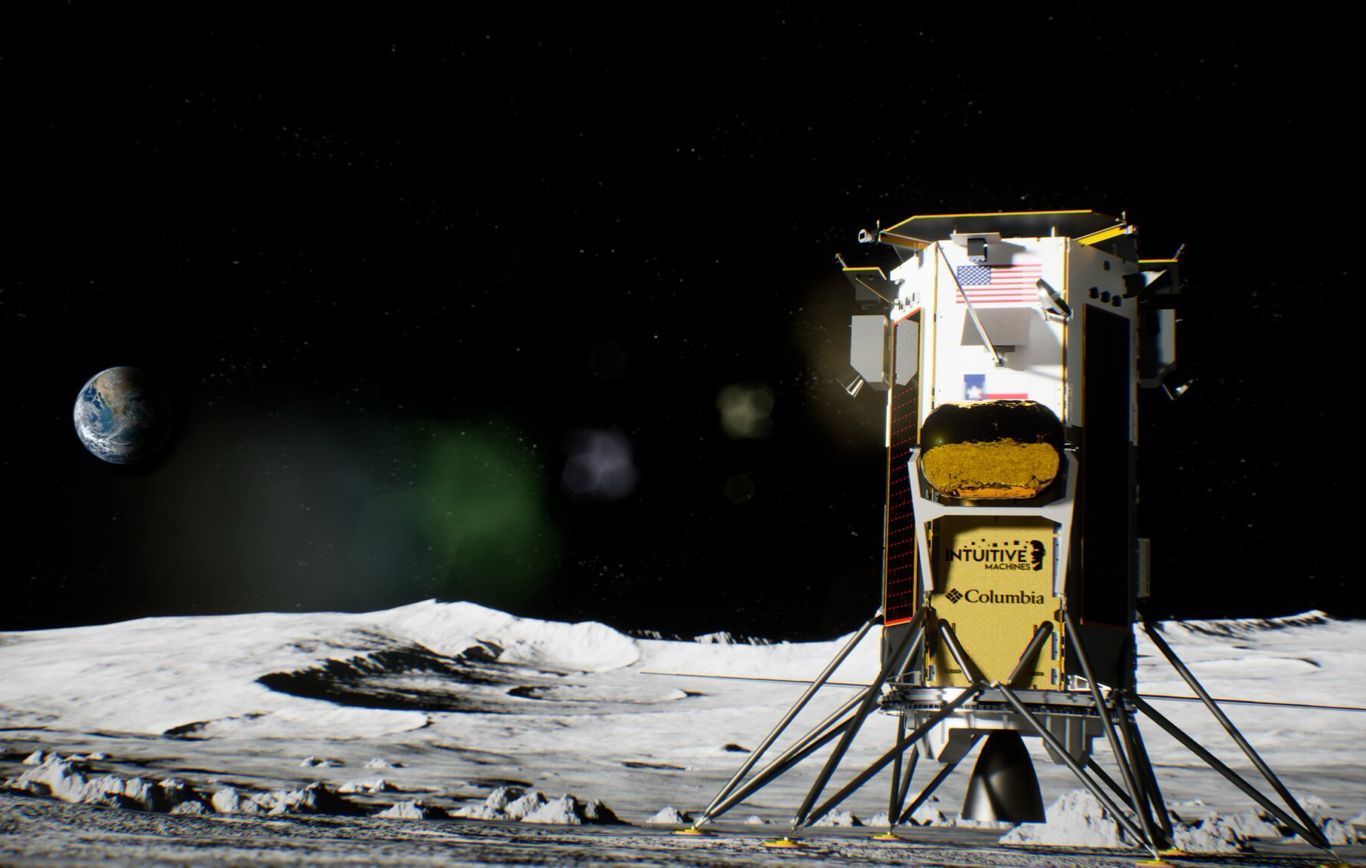
Render of IM-1 lander (Intuitive Machines)
US lunar exploration company, Intuitive Machines, this week made history, becoming the first commercial entity to successfully land on the surface of the Moon. While others companies have also made attempts, such as Israel’s SpaceIL and Japanese startup iSpace, Intuitive Machines are the first to achieve a soft landing, opening-up a new era for the new lunar economy.
The Nova-C lander, named “Odysseus” entered lunar orbit on February 21st and prepared to land near the Malapert A crater in the south polar region of the moon. Following a successful burn of its main engine, the lander touched the surface at 22:30 GMT, February 22, 2024.
The IM-1 mission was contracted under NASA’s Commercial Lunar Payload Services programme (CLPS), the strategy from the US and NASA to purchase lunar transportation services rather than develop their own. The programme aims for more rapid acquisition of such services, encourage competition and galvanise development of the commercial sector, similar to how the government purchases rocket launches from companies such as SpaceX and Rocket Lab.
Among the payloads is a demonstration from Lonestar Data Holdings, who are testing the feasibility of their off-world data recovery service, a plan which aims to place data storage centres on the Moon, as a means of protecting data from human-made and natural disasters.
While on its journey to the Moon, Lonestar successfully sent a digital copy of the US Declaration of Independence to the lander, which it will send once more after the lander is fully operational on the surface. Further to that, the digital document will then be sent back to Earth, hopefully demonstrating its ability to send, save and retrieve data from the Moon.
Lonestar’s demonstration is one of many new lunar-based services and applications which are being explored. Upcoming missions will also involve the continuing search for valuable resources such as water, demonstrating in-situ resource utilisation of such resources to enable a sustained human lunar base, and eventually extracting lunar resources for earthbound uses.
With this mission, Intuitive Machines have demonstrated the new leadership that the commercial sector can take, allowing for more rapid development of the lunar economy.
IM-1 represents intentions of ongoing US-led Artemis project
Missions such as IM-1 play a significant role in the US plan for the future of the Moon and outer space, under the Artemis programme. Commercial lunar missions under the programme will “gain new insights into the lunar environment and expand the lunar economy to support future crewed missions under NASA’s Artemis campaign”, according to a recent NASA blogpost from Nilufar Ramji.
Furthermore, the US-led legal framework, the Artemis Accords, governs and allows for its members to extract and utilise resources on places such as the Moon, therefore permitting such activities from both agency and commercial entities in future. Last week, Greece signed-up to the Accords, and this week Uruguay became its latest member, brining the total number of signatories up to 36.
However, while the Accords are said to be based on the principles of the UN Outer Space Treaty (OST) (one of few universally agreed pieces of space law), the OST itself does not specifically allow for resource extraction, but rather forbids territorial appropriation. Therefore, it seems that frameworks such as the Accords are an effort to enhance international law, and regulate activities such as resource mining.
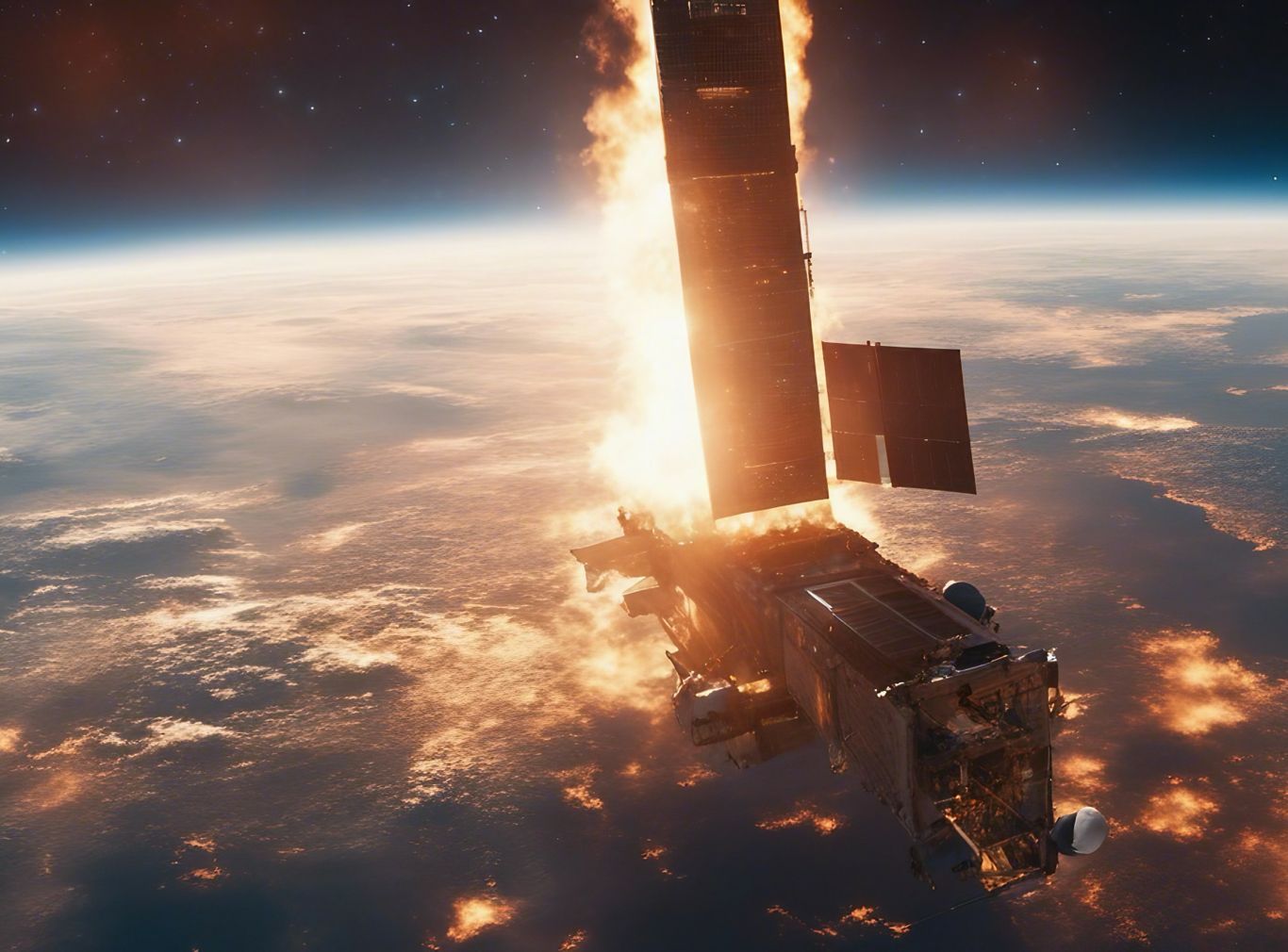
(Image - Adobe)
Need for legal commonality seen in nuclear warning
While they are gathering more members, it is unlikely that the US will be able to entice China or Russia to join the Accords any time soon, meaning that at the moment the only real piece of common space legislation remains to be the OST, which was established in 1967 and is becoming outdated, ambiguous and doesn’t sufficiently regulate activities of the growing commercial sector.
This week Vladimir Putin suggested that Russia would be open to discuss strategic dialogue regarding space activities with the US and the west, but deemed it currently impossible while they “for one thing, are calling for Russia’s strategic defeat (in Ukraine)”. This truly goes to show how space is quickly becoming the new realm of geopolitics, inherently intertwined with political and international dispute.
Putin’s comments come in response to US accusations that Russia intend on developing space-based nuclear weapons, and a White House claim that they have “troubling” anti-satellite capabilities. Any such capabilities would against the terms of the OST, which prohibits “nuclear weapons or any other kinds of weapons of mass destruction” in orbit or the stationing of “weapons in outer space in any other manner”.
Russia did, however, carry out a direct-ascent anti-satellite (ASAT) test back in 2021, destroying one of its defence satellites, an act that was condemned by the US. The Russian Foreign Ministry claimed the test did not violate the OST and any debris created did not threaten any orbiting stations or spacecraft.
This recent incident clearly highlights a need for ongoing dialogue and determination to find some strategic commonality for New Space, as our economic ambitions no longer end in Earth orbit, they now stretch outwards to the Moon, and in the coming years, beyond.
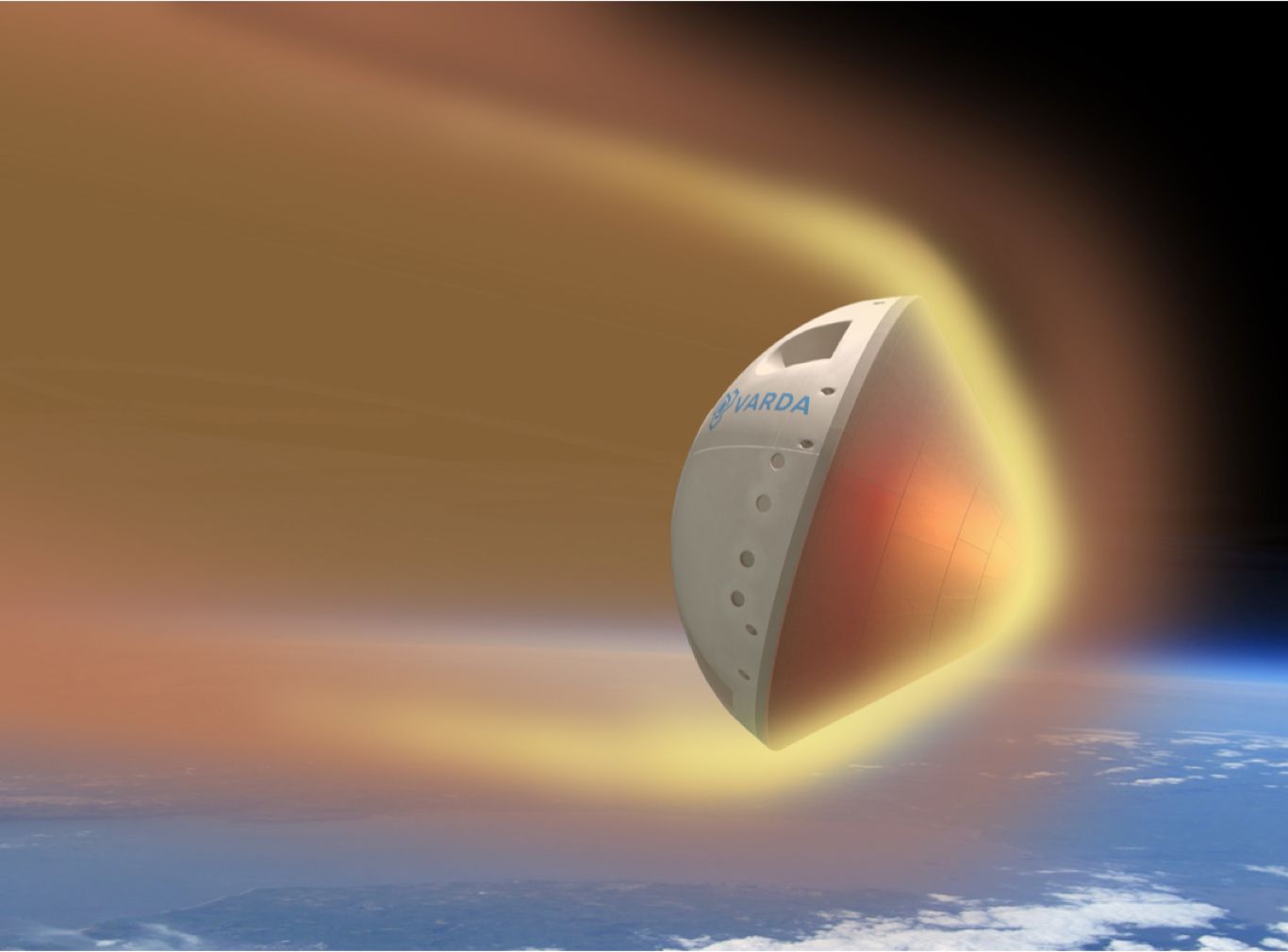
Varda return capsule to Earth (Image - Varda Space)
First for commercial space manufacturing as Varda also make history
After a long 8 months in-orbit, in-space manufacturing company Varda Space finally received FAA license for reentry of its manufacturing capsule, Winnebago-1. The mission was launched in June last year, but struggled to gain Federal Aviation Administration permission for its reentry, after completing production of crystals for ritonavir, a drug used to treat HIV.
After receiving permission from the FAA last week, the capsule reentered Earth’s atmosphere and laded in Utah on February 21st, marking the first time in history a commercial company has landed a spacecraft on U.S. soil.
The capsule will now be returned for analysis at Varda’a facilities in Los Angeles, and the crystals will be shipped to research company, Improved Pharma, for testing. Rocket Lab also share the success for the mission, in providing their Photon spacecraft to host, manoeuvre and provide power to the capsule.
Varda’s mission represents another turning point for the nascent commercial in-space manufacturing industry. Taking advantage of the vacuum and micro-gravity of space is highly beneficial for the production of delicate, valuable materials such as those for semiconductors or pharmaceuticals.
Barriers to access space have already been broken down by launch companies such as SpaceX, and companies such as Varda and Space Forge are proving the feasibility of commercial space manufacturing. Now the hurdle of reentry is being overcome, and with more companies, such as Germany’s ATMOS Space Cargo, looking to develop more cost efficient ways to bring payloads back to Earth, we may be witnessing the birth of a new growth industry.
Define Our Future
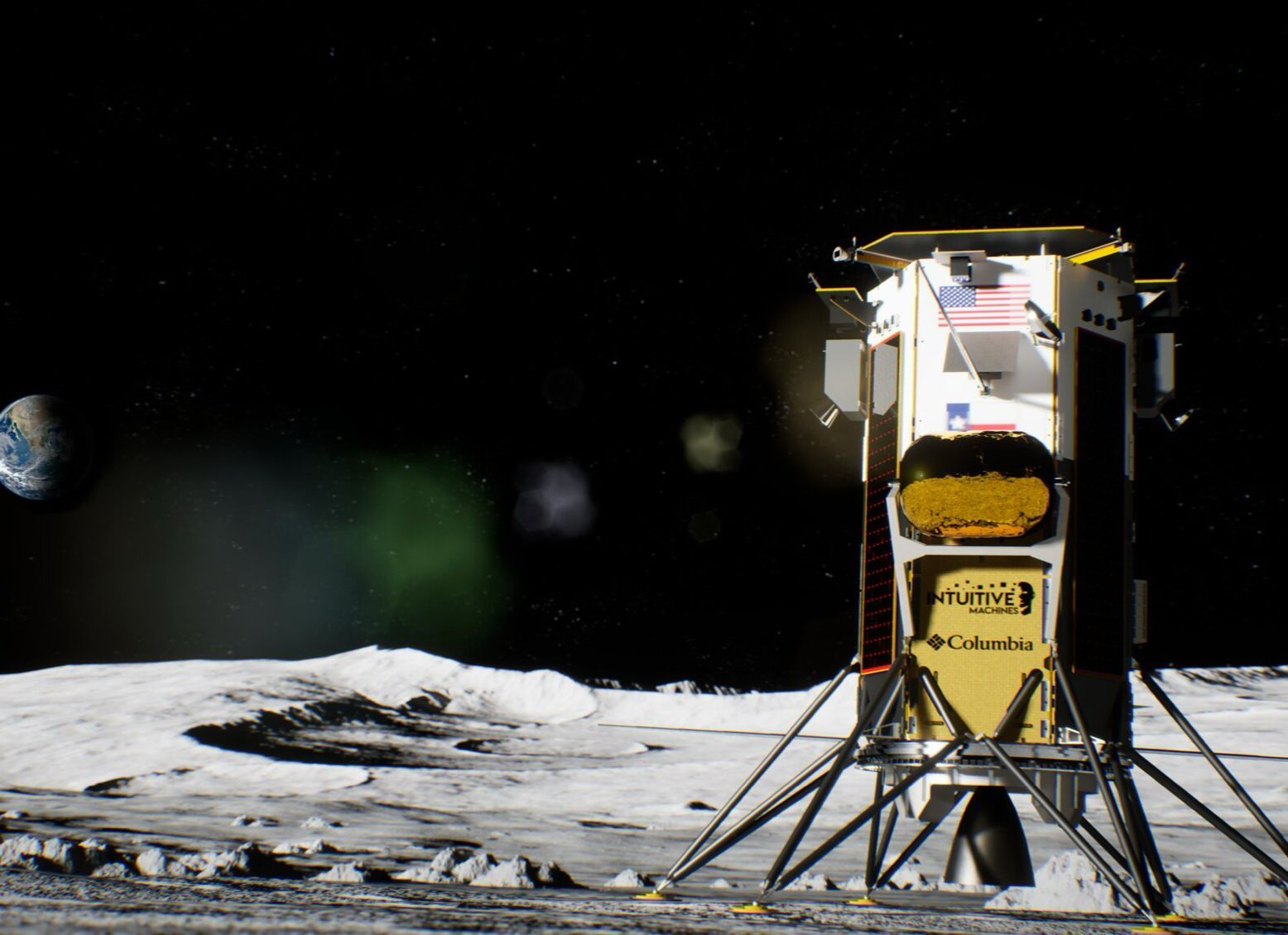
Intuitive Machines launch in Falcon-9 (Image - NASA/Kim Shiflett)
23 February 2024
Intuitive Machines Make History, Putin Rebuts Nuclear Weapons Claims, Varda Return Space-Made Products from Orbit - Space News Roundup
US lunar exploration company, Intuitive Machines, this week made history, becoming the first commercial entity to successfully land on the surface of the Moon. While others companies have also made attempts, such as Israel’s SpaceIL and Japanese startup iSpace, Intuitive Machines are the first to achieve a soft landing, opening-up a new era for the new lunar economy.
The Nova-C lander, named “Odysseus” entered lunar orbit on February 21st and prepared to land near the Malapert A crater in the south polar region of the moon. Following a successful burn of its main engine, the lander touched the surface at 22:30 GMT, February 22, 2024.
The IM-1 mission was contracted under NASA’s Commercial Lunar Payload Services programme (CLPS), the strategy from the US and NASA to purchase lunar transportation services rather than develop their own. The programme aims for more rapid acquisition of such services, encourage competition and galvanise development of the commercial sector, similar to how the government purchases rocket launches from companies such as SpaceX and Rocket Lab.
Among the payloads is a demonstration from Lonestar Data Holdings, who are testing the feasibility of their off-world data recovery service, a plan which aims to place data storage centres on the Moon, as a means of protecting data from human-made and natural disasters.
While on its journey to the Moon, Lonestar successfully sent a digital copy of the US Declaration of Independence to the lander, which it will send once more after the lander is fully operational on the surface. Further to that, the digital document will then be sent back to Earth, hopefully demonstrating its ability to send, save and retrieve data from the Moon.
Lonestar’s demonstration is one of many new lunar-based services and applications which are being explored. Upcoming missions will also involve the continuing search for valuable resources such as water, demonstrating in-situ resource utilisation of such resources to enable a sustained human lunar base, and eventually extracting lunar resources for earthbound uses.
With this mission, Intuitive Machines have demonstrated the new leadership that the commercial sector can take, allowing for more rapid development of the lunar economy.
IM-1 represents intentions of ongoing US-led Artemis project
Missions such as IM-1 play a significant role in the US plan for the future of the Moon and outer space, under the Artemis programme. Commercial lunar missions under the programme will “gain new insights into the lunar environment and expand the lunar economy to support future crewed missions under NASA’s Artemis campaign”, according to a recent NASA blogpost from Nilufar Ramji.
Furthermore, the US-led legal framework, the Artemis Accords, governs and allows for its members to extract and utilise resources on places such as the Moon, therefore permitting such activities from both agency and commercial entities in future. Last week, Greece signed-up to the Accords, and this week Uruguay became its latest member, brining the total number of signatories up to 36.
However, while the Accords are said to be based on the principles of the UN Outer Space Treaty (OST) (one of few universally agreed pieces of space law), the OST itself does not specifically allow for resource extraction, but rather forbids territorial appropriation. Therefore, it seems that frameworks such as the Accords are an effort to enhance international law, and regulate activities such as resource mining.
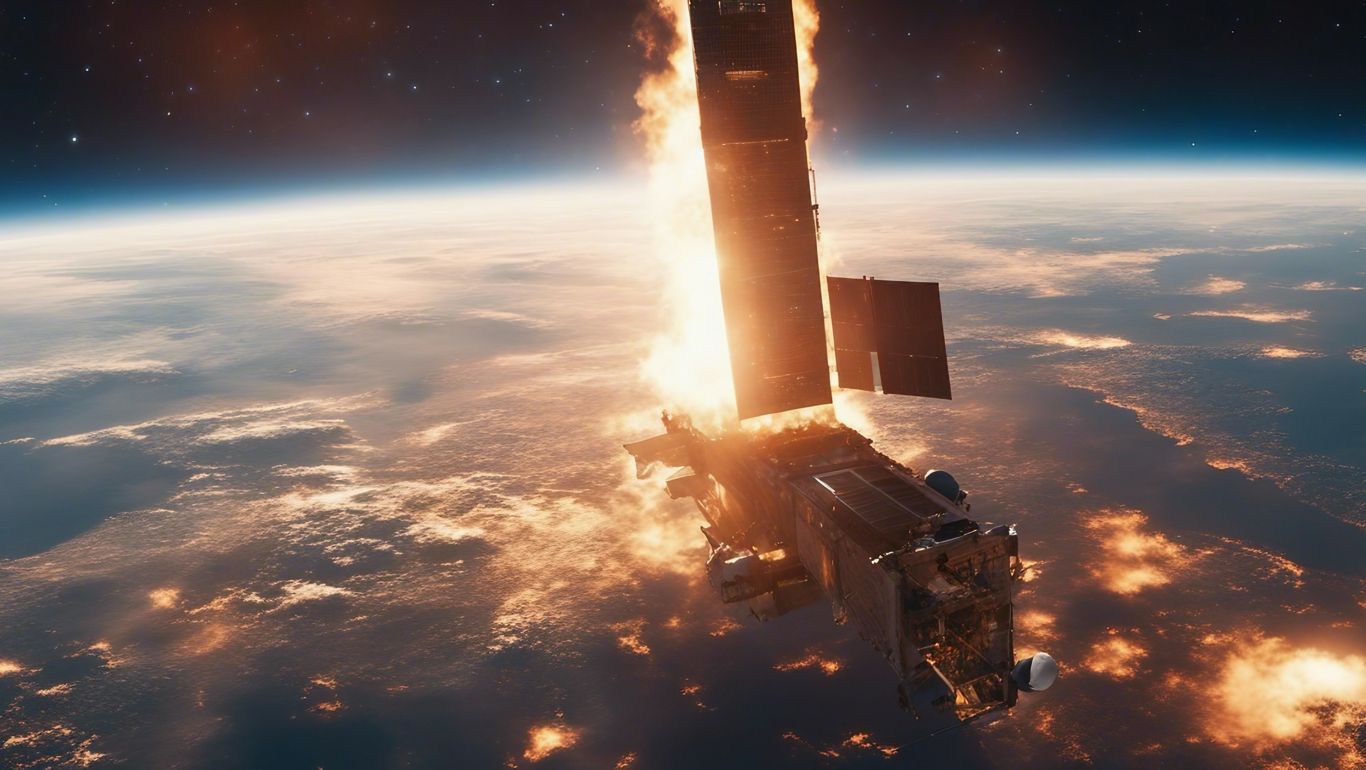
(Image - Adobe)
Need for legal commonality seen in nuclear warning
While they are gathering more members, it is unlikely that the US will be able to entice China or Russia to join the Accords any time soon, meaning that at the moment the only real piece of common space legislation remains to be the OST, which was established in 1967 and is becoming outdated, ambiguous and doesn’t sufficiently regulate activities of the growing commercial sector.
This week Vladimir Putin suggested that Russia would be open to discuss strategic dialogue regarding space activities with the US and the west, but deemed it currently impossible while they “for one thing, are calling for Russia’s strategic defeat (in Ukraine)”. This truly goes to show how space is quickly becoming the new realm of geopolitics, inherently intertwined with political and international dispute.
Putin’s comments come in response to US accusations that Russia intend on developing space-based nuclear weapons, and a White House claim that they have “troubling” anti-satellite capabilities. Any such capabilities would against the terms of the OST, which prohibits “nuclear weapons or any other kinds of weapons of mass destruction” in orbit or the stationing of “weapons in outer space in any other manner”.
Russia did, however, carry out a direct-ascent anti-satellite (ASAT) test back in 2021, destroying one of its defence satellites, an act that was condemned by the US. The Russian Foreign Ministry claimed the test did not violate the OST and any debris created did not threaten any orbiting stations or spacecraft.
This recent incident clearly highlights a need for ongoing dialogue and determination to find some strategic commonality for New Space, as our economic ambitions no longer end in Earth orbit, they now stretch outwards to the Moon, and in the coming years, beyond.
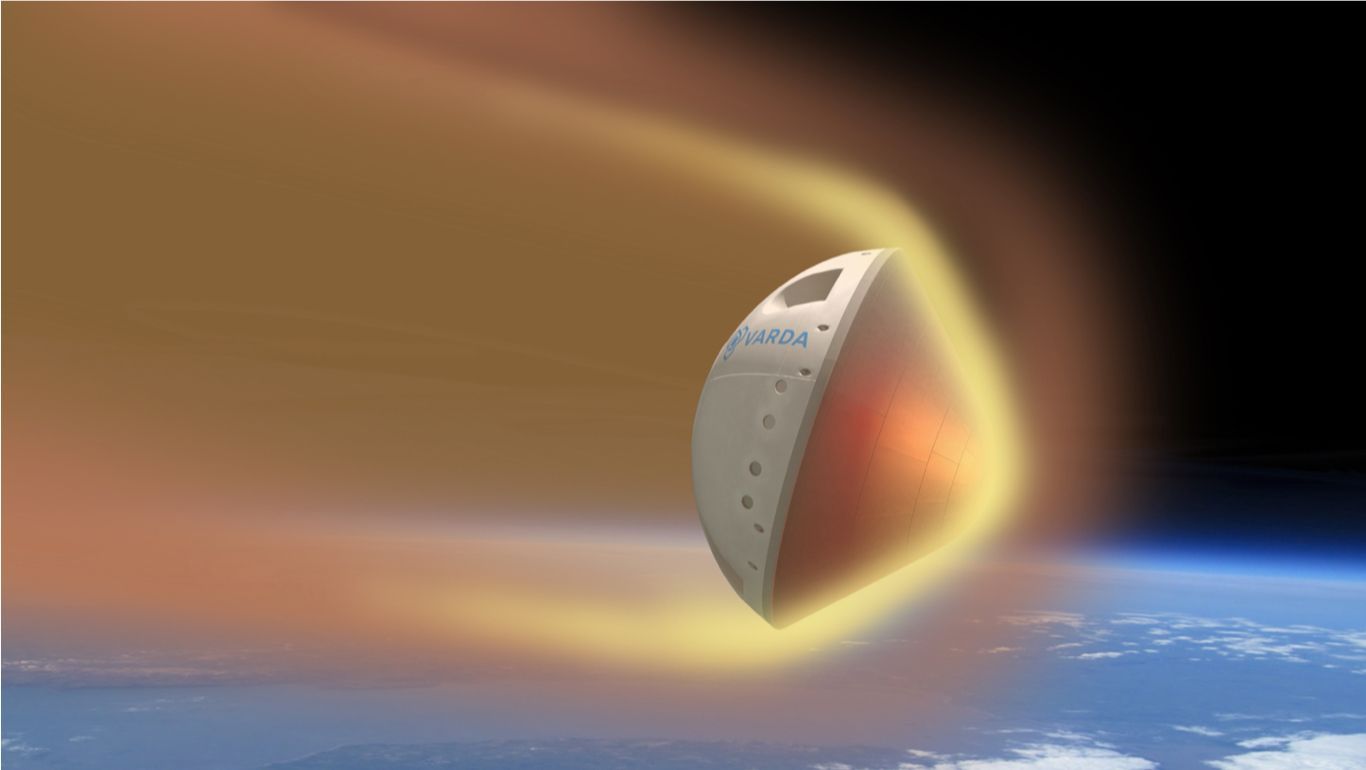
Varda return capsule to Earth (Image - Varda Space)
First for commercial space manufacturing as Varda also make history
After a long 8 months in-orbit, in-space manufacturing company Varda Space finally received FAA license for reentry of its manufacturing capsule, Winnebago-1. The mission was launched in June last year, but struggled to gain Federal Aviation Administration permission for its reentry, after completing production of crystals for ritonavir, a drug used to treat HIV.
After receiving permission from the FAA last week, the capsule reentered Earth’s atmosphere and laded in Utah on February 21st, marking the first time in history a commercial company has landed a spacecraft on U.S. soil.
The capsule will now be returned for analysis at Varda’a facilities in Los Angeles, and the crystals will be shipped to research company, Improved Pharma, for testing. Rocket Lab also share the success for the mission, in providing their Photon spacecraft to host, manoeuvre and provide power to the capsule.
Varda’s mission represents another turning point for the nascent commercial in-space manufacturing industry. Taking advantage of the vacuum and micro-gravity of space is highly beneficial for the production of delicate, valuable materials such as those for semiconductors or pharmaceuticals.
Barriers to access space have already been broken down by launch companies such as SpaceX, and companies such as Varda and Space Forge are proving the feasibility of commercial space manufacturing. Now the hurdle of reentry is being overcome, and with more companies, such as Germany’s ATMOS Space Cargo, looking to develop more cost efficient ways to bring payloads back to Earth, we may be witnessing the birth of a new growth industry.
Share this article
23 February 2024
Intuitive Machines Make History, Putin Rebuts Nuclear Weapons Claims, Varda Return Space-Made Products from Orbit - Space News Roundup
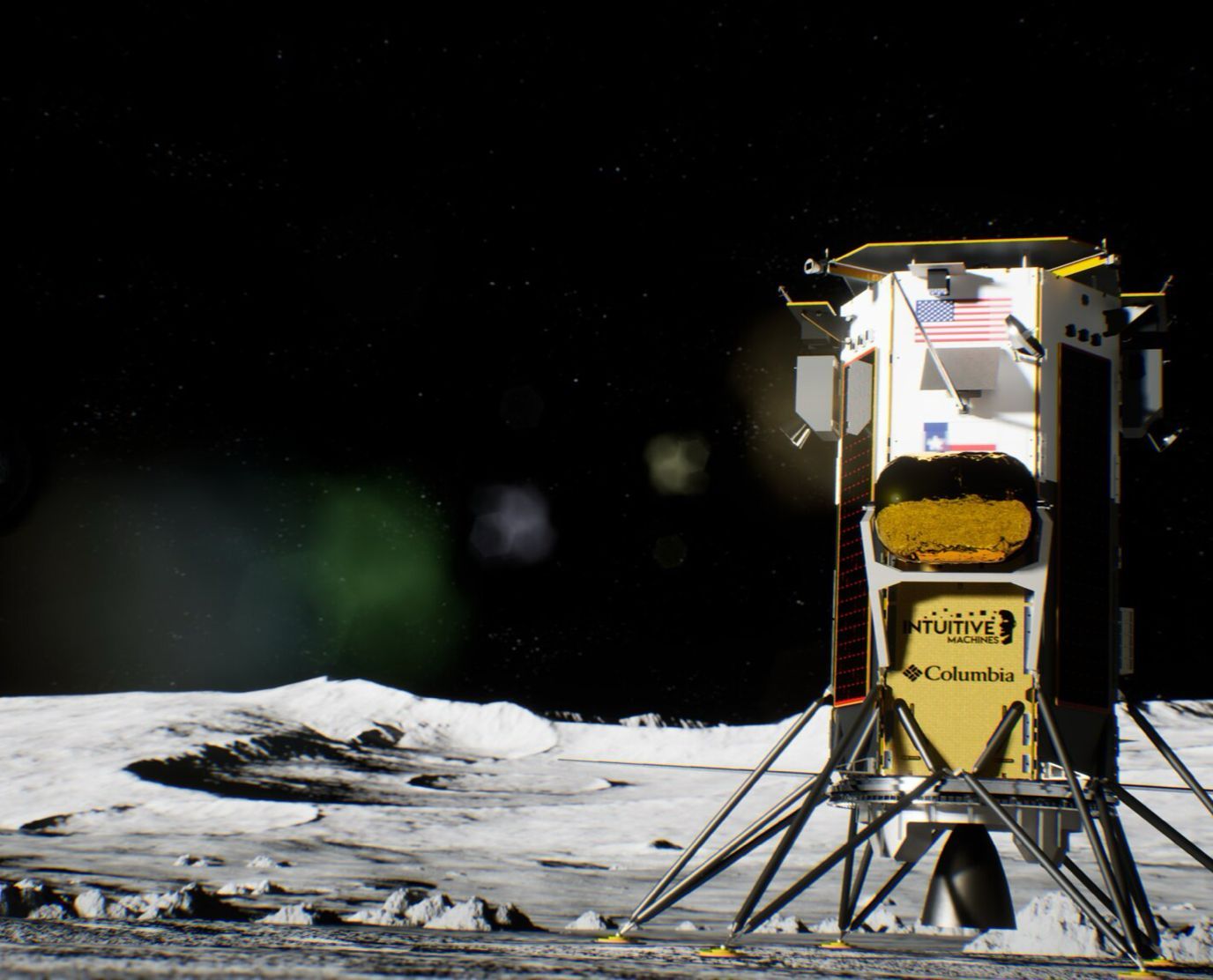
Render of IM-1 lander (Intuitive Machines)
US lunar exploration company, Intuitive Machines, this week made history, becoming the first commercial entity to successfully land on the surface of the Moon. While others companies have also made attempts, such as Israel’s SpaceIL and Japanese startup iSpace, Intuitive Machines are the first to achieve a soft landing, opening-up a new era for the new lunar economy.
The Nova-C lander, named “Odysseus” entered lunar orbit on February 21st and prepared to land near the Malapert A crater in the south polar region of the moon. Following a successful burn of its main engine, the lander touched the surface at 22:30 GMT, February 22, 2024.
The IM-1 mission was contracted under NASA’s Commercial Lunar Payload Services programme (CLPS), the strategy from the US and NASA to purchase lunar transportation services rather than develop their own. The programme aims for more rapid acquisition of such services, encourage competition and galvanise development of the commercial sector, similar to how the government purchases rocket launches from companies such as SpaceX and Rocket Lab.
Among the payloads is a demonstration from Lonestar Data Holdings, who are testing the feasibility of their off-world data recovery service, a plan which aims to place data storage centres on the Moon, as a means of protecting data from human-made and natural disasters.
While on its journey to the Moon, Lonestar successfully sent a digital copy of the US Declaration of Independence to the lander, which it will send once more after the lander is fully operational on the surface. Further to that, the digital document will then be sent back to Earth, hopefully demonstrating its ability to send, save and retrieve data from the Moon.
Lonestar’s demonstration is one of many new lunar-based services and applications which are being explored. Upcoming missions will also involve the continuing search for valuable resources such as water, demonstrating in-situ resource utilisation of such resources to enable a sustained human lunar base, and eventually extracting lunar resources for earthbound uses.
With this mission, Intuitive Machines have demonstrated the new leadership that the commercial sector can take, allowing for more rapid development of the lunar economy.
IM-1 represents intentions of ongoing US-led Artemis project
Missions such as IM-1 play a significant role in the US plan for the future of the Moon and outer space, under the Artemis programme. Commercial lunar missions under the programme will “gain new insights into the lunar environment and expand the lunar economy to support future crewed missions under NASA’s Artemis campaign”, according to a recent NASA blogpost from Nilufar Ramji.
Furthermore, the US-led legal framework, the Artemis Accords, governs and allows for its members to extract and utilise resources on places such as the Moon, therefore permitting such activities from both agency and commercial entities in future. Last week, Greece signed-up to the Accords, and this week Uruguay became its latest member, brining the total number of signatories up to 36.
However, while the Accords are said to be based on the principles of the UN Outer Space Treaty (OST) (one of few universally agreed pieces of space law), the OST itself does not specifically allow for resource extraction, but rather forbids territorial appropriation. Therefore, it seems that frameworks such as the Accords are an effort to enhance international law, and regulate activities such as resource mining.
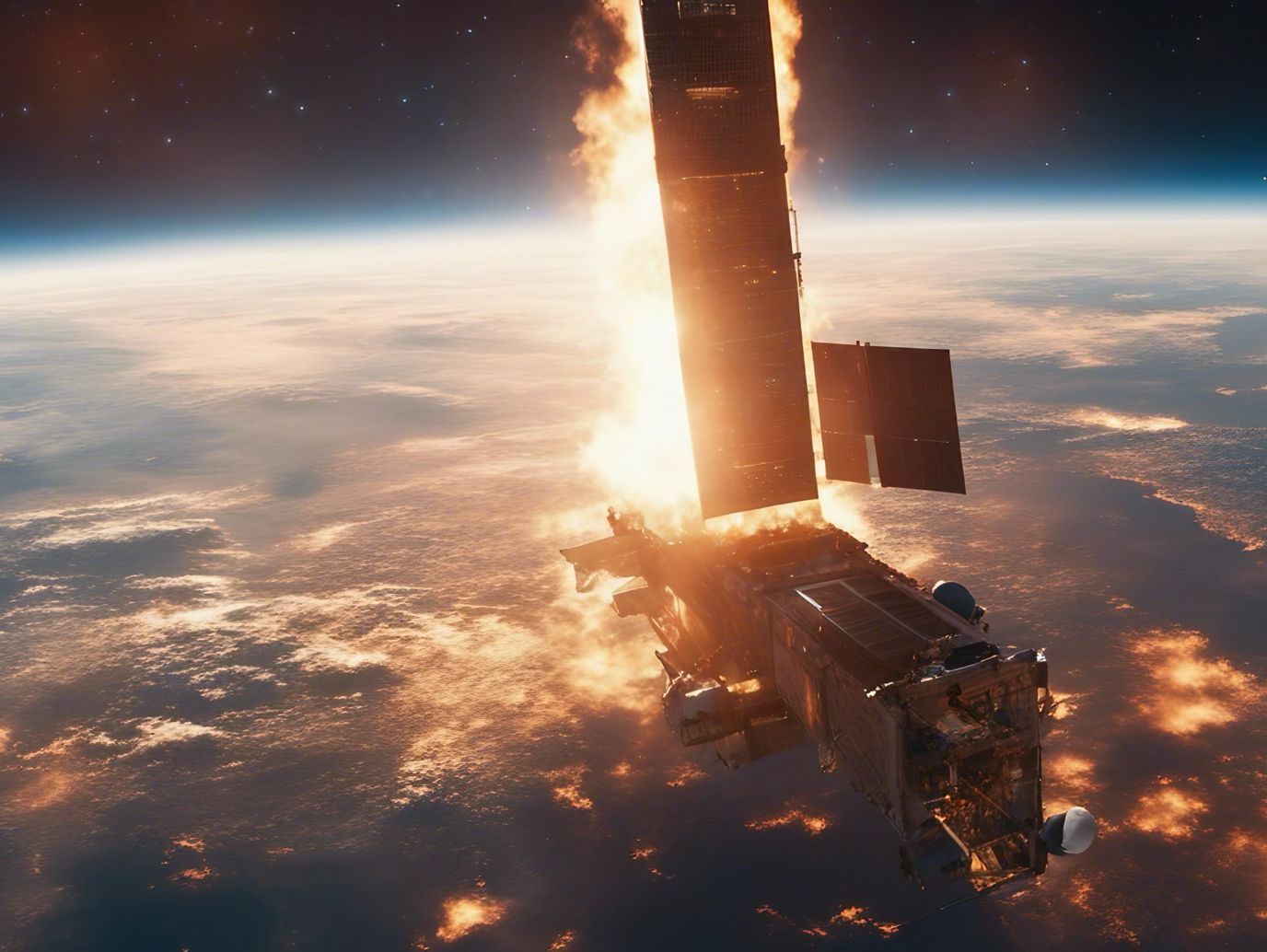
(Image - Adobe)
Need for legal commonality seen in nuclear warning
While they are gathering more members, it is unlikely that the US will be able to entice China or Russia to join the Accords any time soon, meaning that at the moment the only real piece of common space legislation remains to be the OST, which was established in 1967 and is becoming outdated, ambiguous and doesn’t sufficiently regulate activities of the growing commercial sector.
This week Vladimir Putin suggested that Russia would be open to discuss strategic dialogue regarding space activities with the US and the west, but deemed it currently impossible while they “for one thing, are calling for Russia’s strategic defeat (in Ukraine)”. This truly goes to show how space is quickly becoming the new realm of geopolitics, inherently intertwined with political and international dispute.
Putin’s comments come in response to US accusations that Russia intend on developing space-based nuclear weapons, and a White House claim that they have “troubling” anti-satellite capabilities. Any such capabilities would against the terms of the OST, which prohibits “nuclear weapons or any other kinds of weapons of mass destruction” in orbit or the stationing of “weapons in outer space in any other manner”.
Russia did, however, carry out a direct-ascent anti-satellite (ASAT) test back in 2021, destroying one of its defence satellites, an act that was condemned by the US. The Russian Foreign Ministry claimed the test did not violate the OST and any debris created did not threaten any orbiting stations or spacecraft.
This recent incident clearly highlights a need for ongoing dialogue and determination to find some strategic commonality for New Space, as our economic ambitions no longer end in Earth orbit, they now stretch outwards to the Moon, and in the coming years, beyond.
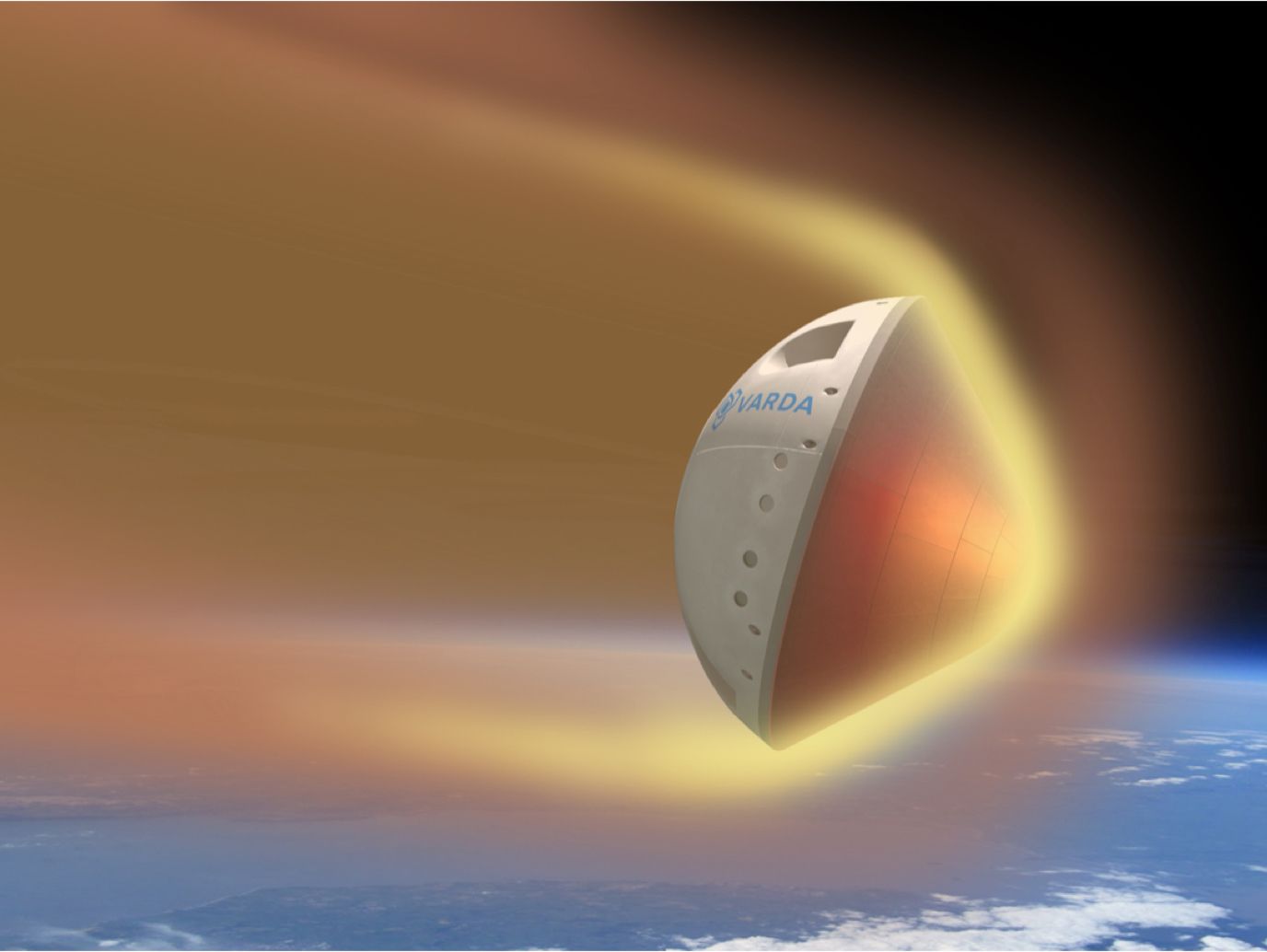
Varda return capsule to Earth (Image - Varda Space)
First for commercial space manufacturing as Varda also make history
After a long 8 months in-orbit, in-space manufacturing company Varda Space finally received FAA license for reentry of its manufacturing capsule, Winnebago-1. The mission was launched in June last year, but struggled to gain Federal Aviation Administration permission for its reentry, after completing production of crystals for ritonavir, a drug used to treat HIV.
After receiving permission from the FAA last week, the capsule reentered Earth’s atmosphere and laded in Utah on February 21st, marking the first time in history a commercial company has landed a spacecraft on U.S. soil.
The capsule will now be returned for analysis at Varda’a facilities in Los Angeles, and the crystals will be shipped to research company, Improved Pharma, for testing. Rocket Lab also share the success for the mission, in providing their Photon spacecraft to host, manoeuvre and provide power to the capsule.
Varda’s mission represents another turning point for the nascent commercial in-space manufacturing industry. Taking advantage of the vacuum and micro-gravity of space is highly beneficial for the production of delicate, valuable materials such as those for semiconductors or pharmaceuticals.
Barriers to access space have already been broken down by launch companies such as SpaceX, and companies such as Varda and Space Forge are proving the feasibility of commercial space manufacturing. Now the hurdle of reentry is being overcome, and with more companies, such as Germany’s ATMOS Space Cargo, looking to develop more cost efficient ways to bring payloads back to Earth, we may be witnessing the birth of a new growth industry.
Share this article
External Links
This Week
News articles posted here are not property of ANASDA GmbH and belong to their respected owners. Postings here are external links only.






